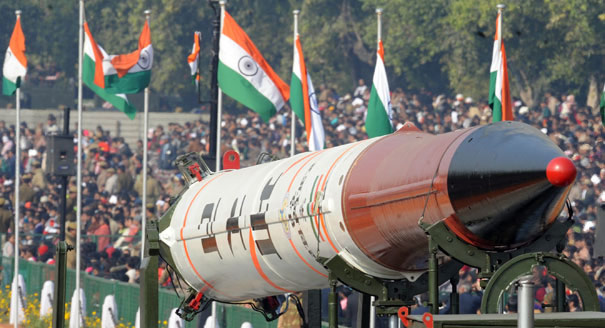Muhammad Asad
Recently, the Indian government okayed purchases of a bulk of the latest military hardware worth 8.5 billion dollars for its tri-forces including the Indian Army, Air Force, and Indian Navy. According to the Ministry of Defense of India, these purchases are part of India’s ongoing drive for military modernization and the construction orders would be placed with domestic producers/ manufacturers to implement the Make in India narrative of the incumbent government. The ambitious shopping list includes 200 supersonic BrahMos missiles, 50 high-performance utility helicopters, and modern Electronic Warfare Systems (EWS) for the Indian Navy, a long-range stand-off weapon for IAF’s SU-30 MKI fleet, along with 307 units of 155mm/52 caliber artillery guns, high mobility vehicles and other sophisticated equipment for Indian Army.
Since its inception in 1947, India has perceived a role of major power for itself and has long been running for the accomplishment of its quest for regional Shariff over the past seven and a half decades. India faces multiple challenges in pursuit of its self-assumed role in its proposed geostrategic region that encompasses the entire area from the Western Indo-Pacific to the Indian Ocean Regions and entrenches across the broader South Asia including Afghanistan. Interestingly, China’s Peoples’ Liberation Army (PLA) and an ever-expanding Chinese Blue water Navy have created a serious threat for India in the East while a determined Nuclear-armed Pakistan persistently challenges Indian hegemonism in the west. New Delhi is unable to compete with the Chinese aggressive behavior at Tibet and Ladakh borders and it also failed to establish a clear supremacy over its western rival despite multiple armed conflicts in the past.
Presently, India possesses the third largest military in the world after China and the United States while New Delhi is massively investing in its defense sector and collecting heaps of lethal weapons from across the world to replace its old-age military machines, air crafts, and warships with state-of-the-art current-day weaponry in all three domains. According to Sweden-based Stockholm International Peace Research Institute (SIPRI), India had been the largest arms importer between 1992-2022 and accounted for 11% of global arms imports and spends billions on the collection of modern-day weapons including main battle tanks, artillery guns, radars, state of the art fighter jet, helicopters as well as Naval warships and Submarines from across the world. The Indian government has allocated $ 67.7 billion for its military spending during the fiscal year 2022-2023, which is 9.8 percent higher than the previous year and 33% more than in 2012.
Over the years, India has pursued a Bizarre Arms Procurement Policy through which Indian state agents made business with global defense manufacturing giants and multiple defense forces in Europe and North America. Once the longstanding and largest defense importer of the former Soviet Union is now a close ally and darling of the United States and receiving unimaginable defense and technological support from the US and its allies. India has forged a strategic partnership with the United States and signed multiple defense and security cooperation pacts with Washington including the Logistics Exchange Memorandum of Agreement (LEMO), Communications, Compatibility and Security Agreement (COMCASA), and others that paved the way for the transfer of US’s critical and highly sensitive technologies to India along with realtime access to US defense/ information system. At the same, New Delhi is one of the few nations that acquired the most advanced and lethal S-400 air defense system from Russia despite utmost opposition from the US.







